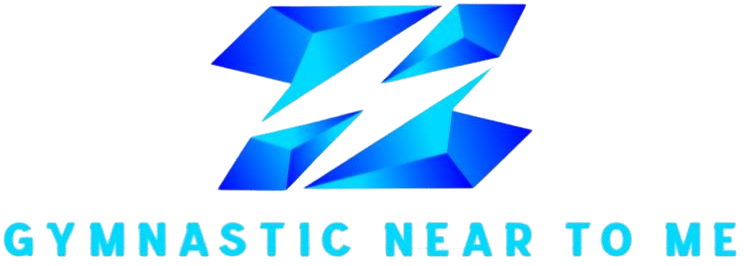Gymnastics is often celebrated as the sport that builds strength, balance, and confidence—but its greatest power might be something simpler: inclusion. With the right support, every child, regardless of physical or cognitive ability, can experience the joy of movement.
Inclusive gymnastics programs are reshaping the way children engage with sport. From sensory-sensitive environments to adaptive equipment and individual coaching styles, these programs are designed to ensure that all kids feel safe, valued, and capable.
In this article, we’ll explore how gymnastics for kids can support children of all abilities, what makes a program inclusive, and why this kind of access matters more than ever.
What Is Inclusive Gymnastics?
Inclusive gymnastics is about removing barriers—physical, social, emotional—so that every child can participate in a way that suits them. It’s not about lowering expectations. It’s about shifting how success is measured.
Instead of focusing on perfection or competition, inclusive programs prioritise:
- Enjoyment and engagement
- Safe exploration of movement
- Personal progress over peer comparison
- Clear, consistent communication
- Adjusted pacing and support where needed
Children may enter with a diagnosis like autism, ADHD, Down syndrome, a physical disability—or no diagnosis at all. The focus is on what they can do, not what they can’t.
And with the right environment, many go further than anyone expected.
Why Gymnastics Is Ideal for All Abilities
Gymnastics is one of the most adaptable sports around. Its variety—rolling, climbing, balancing, swinging—means that every child can find something they connect with.
Here’s why it works so well:
✔️ It’s Highly Visual and Tactile
Kids don’t just listen—they watch and feel. Coaches can demonstrate skills, use hand-over-hand guidance, and offer sensory-based support through equipment like foam blocks, mats, or soft beams.
✔️ It Offers Individual Attention
Even in group classes, coaches often work one-on-one with children as needed. This helps support different learning styles and physical abilities.
✔️ It Builds Trust and Predictability
Repetition is built into gymnastics. The routines, the warm-ups, the class flow—it all provides a rhythm that helps children feel secure.
✔️ It Develops Gross and Fine Motor Skills
From basic crawling and stretching to climbing and swinging, gymnastics supports muscle tone, coordination, and posture—vital for children with physical or developmental delays.
Inclusive gymnastics for kids works best when coaches are flexible and willing to meet each child where they’re at. And that’s exactly what many programs across Australia are doing.
What to Look for in an Inclusive Gymnastics Program
Not all programs are equipped for diverse needs—but a growing number are. Here’s what to check when exploring your options:
- Coach Training: Look for staff trained in disability support, child development, or behaviour management.
- Class Size: Smaller groups allow for individual attention and reduce sensory overload.
- Adaptability: Can equipment be modified? Are there quiet areas or visual schedules available?
- Collaboration: Does the program welcome input from therapists, teachers, or parents?
- Pacing: Are skills broken down into achievable steps? Is progress celebrated?
A quality facility will also ensure safe equipment, consistent routines, and a welcoming attitude. It’s not just about ability—it’s about belonging.
Real Story: Breaking Barriers One Roll at a Time
Zac, 10, has a mild intellectual disability and sensory processing challenges. His parents were unsure if group sport would ever work for him. Too loud. Too fast. Too confusing.
Then they found an inclusive gymnastics class.
Zac started slowly, watching from the side. Week by week, he began exploring the mats. He mastered a log roll. Then a forward roll. Then a mini trampoline jump.
Six months in, Zac led the group warm-up with a smile on his face.
He wasn’t just moving better—he was more confident at school, more social with his peers, and better able to regulate his emotions. That’s what inclusive gymnastics for kids can unlock.
From Gymnastics to Community Sport
One of the unsung benefits of inclusive gymnastics is how it opens doors to other activities. Once children build confidence in their bodies—and in group settings—they often go on to try new sports.
At multi-sport centres, kids may explore options like:
- Junior basketball
- Modified athletics
- Gymnastics for kids transitioning into activities like tape ball indoor cricket, which also cater to varied skill levels
Gymnastics provides a base—physically and emotionally—that can make these transitions smoother and more successful.
Backed by Research and Advocacy
The importance of inclusive sport isn’t just anecdotal—it’s backed by national policy. According to Sport Australia, every child deserves a safe, fair, and inclusive sporting experience.
Programs that embrace access and diversity help children:
- Feel safe and accepted
- Engage in lifelong movement
- Develop physical and social confidence
They also help build more compassionate communities—where difference is seen as a strength, not a barrier.
Final Word: Every Child Deserves to Move
Gymnastics isn’t just for the flexible, fearless, or fast. It’s for the quiet kids, the cautious ones, the curious explorers, and the kids who’ve been told “sport’s not for you.”
Inclusive gymnastics for kids makes space for every kind of learner, every kind of mover. It offers more than handstands and cartwheels—it offers belonging.
And when that’s combined with opportunities to branch out into community-based activities like tape ball indoor cricket, the results can be life-changing.
Because at the end of the day, access isn’t just a program feature. It’s the point.

